May 17, 2022
Breathing is quite possibly the most overlooked biological phenomenon, which is quite ironic, considering that it sustains all of human life. Yet we seem in the health sector to focus more on fitness, diet, supplements, and the like, while ignoring the free physiological trigger built into each of us.
Of course, breathing is something you do without even thinking about it—in other words, you go on “autopilot” for one of the most important bodily functions of your existence. (Which is kind of a great thing when you consider that the average person takes 22,000 breaths per day.)
While you’ve probably heard at least some mention of breathwork and its vast benefits in managing stress and anxiety and contributing to overall wellbeing, it’s still a widely untapped practice boasting many scientifically-backed benefits. If you can make breathwork a daily habit, you'll not only improve your mood on a daily basis, but you'll also be making a significant long-term investment in your health. The 53-year-old Framingham study data has shown that increasing your oxygen and lung capacity lowers your risk of mortality—in fact, it's one of the best predictors of longevity—and directly affects your nervous system, which is responsible for memory, learning, waking up, and control of movement, among other things.
The breath is the lever that controls the autonomic nervous system—circulation, blood flow, heart rate variability, oxygen absorption, immune system, hormonal response, and emotional state—it impacts literally all functions in the body. As Dr. Andrew Weil often says:
“If I had to limit my advice on healthier living to just one tip, it would be simply to learn how to breathe correctly.”
The best part?
Breathwork is free, you can feel the benefits within seconds, and there are tools today—such as my favorite breathwork app called “Othership”—that make it nearly effortless to incorporate breathwork into your daily life, whether you're a beginner or advanced breathwork practitioner.
I’ve previously talked about how breathwork has been a part of my own transformational health and spiritual awakening journey on multiple occasions, including in the following articles and podcasts:
- The Ultimate Breathwork Ninja Guide: How To Banish Stress & Kiss High Cortisol Goodbye
- How To Tap Into The Secret Psychedelic Tactics Of The Ancients Using A Free & Fast Anti-Aging, Stress-Busting, Energy-Boosting Hack.
- How To Blast You (And Your Child’s!) Physical, Mental, & Spiritual Resilience Through The Roof With Breathwork.
- The Renegade Breathing Mastermind Behind The Crazy Holotropic Breathing Protocol I Do In My Sauna (& Biohacking Breathwork, Best Foods For Breathhold Time & Much More!).
- Breath Vs. Psychedelics: How Breathwork Journeys Can Release DMT For A Psychedelic-Like Experience, Clear Emotional Trauma, & Re-Energize Your Body.
- Chapter 3: Breathwork and Beyond, from my book Boundless
However, the purpose of today's article is to give you more of a practical look at breathwork and a few easy ways you can incorporate it into your daily routine today, such as three types of breathwork for a better mood, how to combine meditation and breathwork, and four simple techniques for CO2 tolerance, performance, sleep, and longevity that will have noticeable effects on your physical health.
So take a few deep breaths, and get ready to experience the healing power of breathing.
Fight-Or-Flight: The Modern-Day Paradox
Your breath has an intimate connection to your physical body.
According to research by a previous podcast guest and breathwork expert James Nestor, author of Breath: The New Science of a Lost Art, 80% of the messages sent to your brain actually come from the body, not the other way around. In other words, your body may be running the show for your brain!
This means that the depth, volume, and speed of your breath can all affect how your brain instructs you to feel and react, which has a powerful impact on your emotions and nervous system. So, how does this work exactly?
Consider how your breath impacts your perception of the world, which is guided by thoughts, feelings, and emotions. When you’re stressed, your sympathetic nervous system, also known as your fight-or-flight response, switches on. Your entire body tenses up and your breath becomes shallow and rapid as if you’re ready for danger. Conversely, when you’re in a relaxed state and your parasympathetic nervous system is activated, your breaths are slower, longer, and more even. Your nervous system is in a state where you can experience joy and connect more intimately.
When experiencing intense emotions like anxiety, grief, or anger, the body often gets stuck in a never-ending feedback loop (meaning the outputs are circled back and used as inputs). Emotions and stress trigger the sympathetic nervous system, leading to a tense body that is alert and on defense. The activation of this sympathetic nervous system sends signals to the brain that reaffirms the fight-or-flight state, creating a continuous loop of stress. The body’s fight-or-flight reaction is by evolutionary design, meant to protect you from external threats like a lion in the wild.
In modern life, however, truly life-threatening events are scarce. In today’s “always-on” society, a Slack notification or Instagram post can trigger a fight-or-flight state instantly. Unfortunately, it's likely that you start your days with these inputs and continue to be exposed to them all day long, making it harder than ever to be in the nervous system state where you can find joy and meaning. You may also remain in an acute stress response due to chronic stress or unhealed and deep-seated trauma. Regardless of its cause, a continued overactivation of the sympathetic nervous system is alarmingly dangerous for your body and is linked to obesity, heart disease, depression, and other illnesses.
To stop this damaging overactivation of fight-or-flight, the body and mind must be told it is safe. By doing so, it can enter the rest-and-digest mode where healing and regeneration take place. The fastest way to interrupt cycles of spiraling emotions and instruct the mind to switch on the sympathetic system is through conscious breathwork. Intentionally altering breathing patterns can invoke a desired physical response, allowing your feelings and state of mind to follow suit.
If trapped in a sympathetic state of stress, I recommend taking a pause to first notice it without judgment. Then, slow down your breathing and fully utilize your diaphragm, which will send new signals to your nervous system, reassuring your brain that you and your environment are safe. Slow, even breaths that emphasize a longer exhale, such as a four-count inhale and eight-count exhale, will lower the heart rate and bring your body back to a state of relaxation.
Up, Down, Explore: 3 Breathwork Modes For Optimal Health & Mood
Breathwork brings a host of benefits from optimizing performance, reducing anxiety, and even healing trauma and addiction.
All styles of breathwork boil down to these three changes to the nervous system state. For the sake of this article, I'm going to call them Up, Down, and Explore.
1. Up: Sympathetic Response (Fight-Or-Flight State)
 As I discussed earlier, your sympathetic nervous system is what activates your fight-or-flight response during stressful situations. Your heart races, your focus narrows, and your brain produces norepinephrine, the neurotransmitter for attention and vigilance. You are ready for action. An example of this pattern is double breathing, which ignites the breath with short bursts of air and quickly activates your sympathetic nervous system.
As I discussed earlier, your sympathetic nervous system is what activates your fight-or-flight response during stressful situations. Your heart races, your focus narrows, and your brain produces norepinephrine, the neurotransmitter for attention and vigilance. You are ready for action. An example of this pattern is double breathing, which ignites the breath with short bursts of air and quickly activates your sympathetic nervous system.
For my “up” breathwork, I start with 7-10 minutes of a Wim Hof variant of breathing to engage the fight-or-flight response and prepare for the day. This is the ultimate morning routine booster. You can also use this style before deep work or a presentation to find energy or inspiration. When you make breathwork a daily habit first thing, I have a feeling that you'll find that your day starts off significantly more productive and positive.
Try this type of breathwork first thing in the morning with your morning cup of coffee. It will reinvigorate you and wake you up, leaving you refreshed and prepared for the day. It’s like revving up the engine of your nervous system.
2. Down: Parasympathetic Response (Rest-And-Digest State)
On the opposite end of the spectrum, when you breathe slow and deep through the diaphragm, you stimulate your vagus nerve, which activates your parasympathetic nervous system—the rest-and-digest system. One popular type of “down” breathwork is box breathing, which involves counting for an even number of inhales, holds, and exhales. Navy SEALS use this technique to get clear, calm, and focused in high-stress situations (and in fact, I learned this technique from Navy SEAL Commander Mark Divine).
Box breathing eases panic and worries, helps you cope with feelings of overwhelm, and can control hyperventilation as you focus on breathing rhythmically. I use box breathing during ice baths, and when I'm resisting the urge to flinch from needles and syringes during blood draws and injections.
I do this type of breathing nearly every day after I close my laptop for the day, as it helps to calm me down and shift out of my “overstimulated” state of work and into a state of presence with family and loved ones. It allows for the subconscious mind to take over and the nervous system to rest for the evening.
Try this breathwork at the end of the day or during a particularly stressful situation. This style of breathing will slow you down, ground you, and bring you to a place of calm focus. It’s like hitting the brakes on your nervous system for a pause and clarity.
3. Explore: Processing Emotions
Sometimes, you need to look inward and reflect and process your emotions to heal. Often compared to psychedelic use, “explore” breathwork is a powerful modality for healing trauma and processing emotions. I like to refer to it as “creating space.” One example of explore breathwork is holotropic breathing, which is generally conducted by a facilitator and includes the use of curated soundtracks to bring the breather into a trance-like state in which the thinking mind is turned off due to lack of oxygen and emotions are then processed.
Dr. Stanislav Grof, a psychiatrist, theoretician, and pioneer in psychedelic medicine and consciousness research, and his partner, Christina Grof, developed holotropic breathwork in the 1970s. This style of breathwork has garnered interest in the treatment of PTSD and other mental health conditions. It includes fast-paced hyperventilating-inducing breathing. Practitioners have had psychedelic-like experiences, including changes in self-perception, sense of time, and visions that pave the way for healing without the use of external substances. I myself have experienced profound breakthroughs akin to those when using plant medicines. A couple of times a month, laying flat on my back in my sauna, I practice a method of breathing similar to holotropic breathing called SOMA breath. Those sessions often bring me to my deepest level of consciousness, light, love, and wisdom—without drugs or substances of any kind.
Committing to a Sunday morning deep dive of explore breathwork can help to keep your emotional state strong and to release emotions that build up during the week. Ultimately, this type of breathwork helps self-healing and emotional processing through connection to breath—allowing whatever comes up to be expressed, processed, and released.
Try this tactic whenever you want to further explore your emotions, process, and release. Here is an example of a longer deep-dive breathwork I use weekly that is great for processing challenging emotions like grief, guilt, anger, shame, and worry, and inspiring positive behavior change and self-love. This breathing pattern allows the nervous system to reset and release as you go inward and can often feel almost like a rebirth of sorts.
Combining Meditation & Breathwork
 You might hold the common misconception that meditation and breathwork are one and the same—but they are not, nor are they mutually exclusive.
You might hold the common misconception that meditation and breathwork are one and the same—but they are not, nor are they mutually exclusive.
Even if you meditate on a regular basis, incorporating breathwork into your routine can have extraordinary benefits for your mental and physical health.
I've spent considerable time training with spiritual teachers from all over the world, and have seen the importance of meditation and breathwork as components of a larger part of personal development—intertwined with yoga, relationship counseling, and empowered living.
Meditation is the practice of observation and awareness—you observe your breath, body, and emotions without manipulating or trying to change them. It is about cultivating focus and insight and is notoriously challenging for our overstimulated society. On the other hand, breathwork is a form of active meditation that strategically and consciously alters our nervous system state from a physiological perspective, which is more similar to exercise.
In under 10 minutes, through the breathing techniques mentioned above, you can push the gas pedal on the nervous system or push the brake—and get immediate feedback. While the link between stress reduction and meditation is well-researched, some studies note that real, lasting results require consistent practice over a longer period of time. Many people find it challenging to turn breathwork into a habit, however, once it is established it will likely be an automatic part of your daily routine.
Conscious breathwork invokes an immediate nervous system response. There are similarities with fitness training, which has made conscious breathwork a natural first step for many in my community. In a single session, it’s possible to feel stress relief as the exercises help your body complete the stress cycle. Additionally, breathwork doesn’t require the same level of awareness that is needed for meditation. Breathwork is a more accessible practice that can be done with upbeat music to help invoke a relaxing or releasing sentiment. I personally like to combine breathwork practice with other sensory tools like essential oils or smudging with sage or palo santo. When I’m too busy for my morning routine, I’ve also used breathwork while I'm cooking or working to ensure my breathing patterns are optimal. Othership, my favorite breathwork app (hands-down), has background breathing patterns for all of these activities.
Unlike meditation, many types of breathwork are considerably active, giving the respiratory system a workout. Unsurprisingly, some of the biggest benefits of these types of practices are related to improved respiratory and circulatory systems, which are linked to stronger lungs and lower blood pressure. More targeted benefits of breathwork include strengthening lungs for COPD and asthma patients and endurance training for athletes. While the impacts of breathwork and meditation are complementary, they differ and should ideally be used in tandem for maximum benefit.
4 Life-Changing Ways To Benefit From Proper Breathing
Knowing the significance of breath on the body and its ability to adjust mood, increase energy, and improve physical performance can help encourage better day-to-day awareness of good breathing techniques.
This awareness has been game-changing for me as I navigate different areas in my life. I'm certain that cultivating awareness around breathing patterns and when to invoke certain mindstates can significantly enhance and optimize your life, too.
Outside of the up, down, and explore techniques, there are many baseline health benefits to proper daily breathing. Here are four of my favorite practices and how they benefit different aspects of your health.
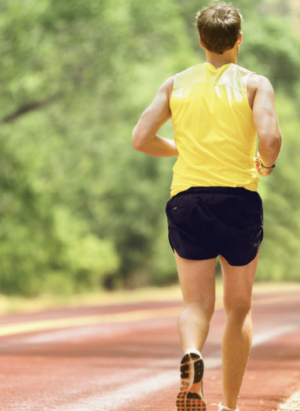 1. Increase CO2 Tolerance To Improve Your Endurance
1. Increase CO2 Tolerance To Improve Your Endurance
Proper breathing can mean less exertion on your runs. Runners must focus on endurance and breath in a way that is efficient and coordinated. A study by McDermott, et al., in the article Running training and adaptive strategies of locomotor – respiratory coordination found that runners have a tendency to coordinate their footsteps with their breath, breathing in a 2:1 or 3:2 pattern. For example, runners would inhale for two steps and exhale for one, or inhale for three steps and exhale for two. And when you breathe during athletic performance, you not only use more oxygen but more carbon dioxide is produced as a byproduct. By increasing your tolerance to CO2, you increase your athletic ability to perform by absorbing oxygen more efficiently.
2. Use Efficient Breathing To Improve Performance During Exercise
Similar to running, breathing optimally during exercise involves exerting less. Nasal breathing during physical exercise is advised because breathing through the mouth doesn’t increase oxygen to the cells and may actually result in low oxygen concentration in the bloodstream. As James Nestor points out in his research, you take in 20% more oxygen if you breathe through your nose than from your mouth. Therefore, as you increase oxygen absorption, you actually increase your energy and performance. To build CO2 tolerance for athletes I recommend Buteyko breathing and the BOLT (Body Oxygen Level Test).
Buteyko breathing, which was coined by a Ukrainian doctor named Konstantin Buteyko, helps you control the speed and volume of your breath and has been known to improve asthma, counter anxiety, and decrease insomnia. The BOLT is a simple assessment created by Patrick McKeown, the founder of Buteyko Clinic International. It's an effective way to test your breath, giving information on how soon you feel the first sensation of breathlessness. The BOLT helps determine the relative breathing volume during rest and breathlessness when performing physical activity. This can help you to build a higher tolerance to CO2. A few tools I have used in the past to further enhance, limit or control my breath during exercise include the Relaxator, the TrainingMask, the PowerLung, and the PosturePro kit, all of which can also assist with CO2 tolerance, along with inspiratory/expiratory control and muscle training.
3. Employ Parasympathetic Breathing & Mouth Taping To Improve Sleep
To sleep soundly, you need to achieve some level of relaxation. When you’re anxious, you inhale quick and shallow breaths, usually in the chest. This is known as over-breathing. Triggering the flight-or-fight state, over-breathing is the antithesis of rest-and-digest invoking breaths, which create a feeling of calm. Achieving a relaxed state by activating the parasympathetic response can help counter insomnia and provide a night of more restful and undisturbed sleep.
To turn on your parasympathetic system, you must send signals to your brain that you are calm and safe, which will effectively lower your heart rate. Long exhales slow the heart rate, and deep diaphragmatic breaths trigger the parasympathetic-inducing nerves in the bottom of the lungs. A breathing exercise to kickstart this involves breathing in for a steady and even count of three, holding for seven, and then exhaling for six to eight counts.
I’ve personally seen this style of breathing before bed increase my HRV (heart rate variability) by 20% the next day on my Oura ring. Simply put, HRV is the tiny fluctuations of your heartbeats—the small measure of time between each heartbeat. This is controlled by your nervous system and affects everything from reducing morbidity to improving overall well-being.
Another popular, but unorthodox, technique to improve breathing is mouth taping, which has been linked to reducing snoring, improving allergies, and improving oral health. Mouth taping involves the literal taping of the mouth (yes, with actual tape, but get the kind designed for face adhesion!) while sleeping to avoid inadvertent mouth breathing. My favorite mouth tape of late is called “Hostage Tape,” which works best for me due to my facial hair.
4. Increase Lung Capacity For Longevity
Research has linked lung function and human longevity. In fact, lung capacity is a primary predictor of longevity. Increasing lung capacity has many benefits and is also the focus of pranayama practices in yoga. One breathing technique for enhancing lung capacity is diaphragmatic breathing, which involves long and slow breaths taken through the belly. Notably, one of the best ways to increase lung capacity is with a weekly VO2 max triggering session, which consists of 4-6 efforts of 4-6 minutes of maximum sustainable pace exercise, with 4-6 minutes of active recovery between each.
Make Breathwork A Daily Habit With Othership
The most difficult part of breathwork, meditation, and most new wellness routines is not starting them; rather, it's making them a regular habit so that you continue to see long-term benefits.
Breathwork is an easily-accessible tool you already have that can help produce real and tangible effects—you just need to learn how to use it regularly and intentionally.
I incorporate breathwork into my daily life, throughout the day, starting first thing in the morning. While my breathwork practice is solid and has been for many years now, I have still benefitted tremendously from a new app called Othership that is now an invaluable part of my routine.
The number of breathwork apps out there seems to be climbing daily, and while I don't doubt that there are others that are helpful, Othership is just really, really darn good. It keeps me on track because it helps me seriously look forward to doing my daily breathwork—and as you probably know already, if you enjoy a habit, you're much more likely to stick with it.
Othership has over 300 breathwork classes taught by world-renowned breathwork facilitators, helping you master a variety of techniques through guided visuals and audio. The app is loaded with more than 500 guided breathwork sessions ranging from “pick-me-up” energy boosts to “othertrip” sessions for “orbiting time and space.” All exercises are science-backed and can assist you with stress reduction, boosted mood, sleep improvement, performance enhancement, and emotional regulation.
Other benefits of using Othership include:
- Incorporating certain breathwork practices to help build up lung capacity and breath retention
- Harnessing the power within to kickstart your day and breathe life into your focus and productivity
- Reaching altered states through esoteric experiences to help regulate your emotions and engage in affirmations and manifestations
- Building a routine for good sleep, and unwind with practices to destress and linger in the present instead of thinking into the future unnecessarily
- Stretching to new areas of movement through embodiment practices, such as mixing conscious breathing simultaneously with walking or ice bathing
Along with my twin sons, I've personally been using Othership to do a 6-15 minute “up” session each day, a “down” session before naps or sleep, and on the weekends I've been incorporating the longer 50-70 minute holotropic-style, trippy “explore” sessions. (Tip: it's better to listen with headphones, by the way, because many of the tracks also include binaural beats to shift you into different brainwave states.)
A final note: Othership isn't a breathwork course or class, per se, and so for that, if you want a really great baseline for learning everything you need to know about breathwork, I recommend courses from Josh Trent and/or Niraj Naik. I'm personally a breathwork junkie, so I've taken both courses with my twin fourteen-year-olds, and I think either one is a fine choice if you want to take a deep dive into breathwork.
Summary
Between all the research on breathing and our well-being lies one incredibly liberating fact…
…being aware of the physiological effects of your breathing on your emotions and your nervous system means you can help influence how you feel at any given moment.
At this point, I don't doubt that you understand the transformational rewards of breathwork. You’ve heard about the seemingly endless amounts of the neuroscience behind it, you’ve read the articles about the countless benefits, and maybe you’ve even dabbled in a few courses or guided sessions.
 But even though it's clear that breathwork is powerfully good for you, you may still struggle to find the time and motivation to make breathwork a daily habit. Trust me, I'm guilty of this too. Sometimes I just have so much going on that it’s hard to allow myself to relax and give in to 20-30 minutes of not doing, and simply breathing.
But even though it's clear that breathwork is powerfully good for you, you may still struggle to find the time and motivation to make breathwork a daily habit. Trust me, I'm guilty of this too. Sometimes I just have so much going on that it’s hard to allow myself to relax and give in to 20-30 minutes of not doing, and simply breathing.
Incorporating breathwork into your routine can profoundly impact your personal, spiritual, and physical life. In the same way that meditation apps assist you with gentle meditation practices, a portable and on-demand breathwork application can help you with trauma processing, stress release, improved performance, your morning routine, and sleep.
Othership is, hands-down, my top recommendation if you want to make breathwork a daily habit.
In closing, I want to leave you with a quick, simple exercise you can do multiple times each day that's designed to help the nervous system function optimally. I call it the “perfect breath,” and you simply breathe in for six, hold for eight, and breathe out for eight.
If you've been able to make breathwork a daily habit, I want to hear from you. Leave a comment below and share your routine and advice with those who are still looking to solidify this health practice. Also, have you tried Othership? If so, what did you think?

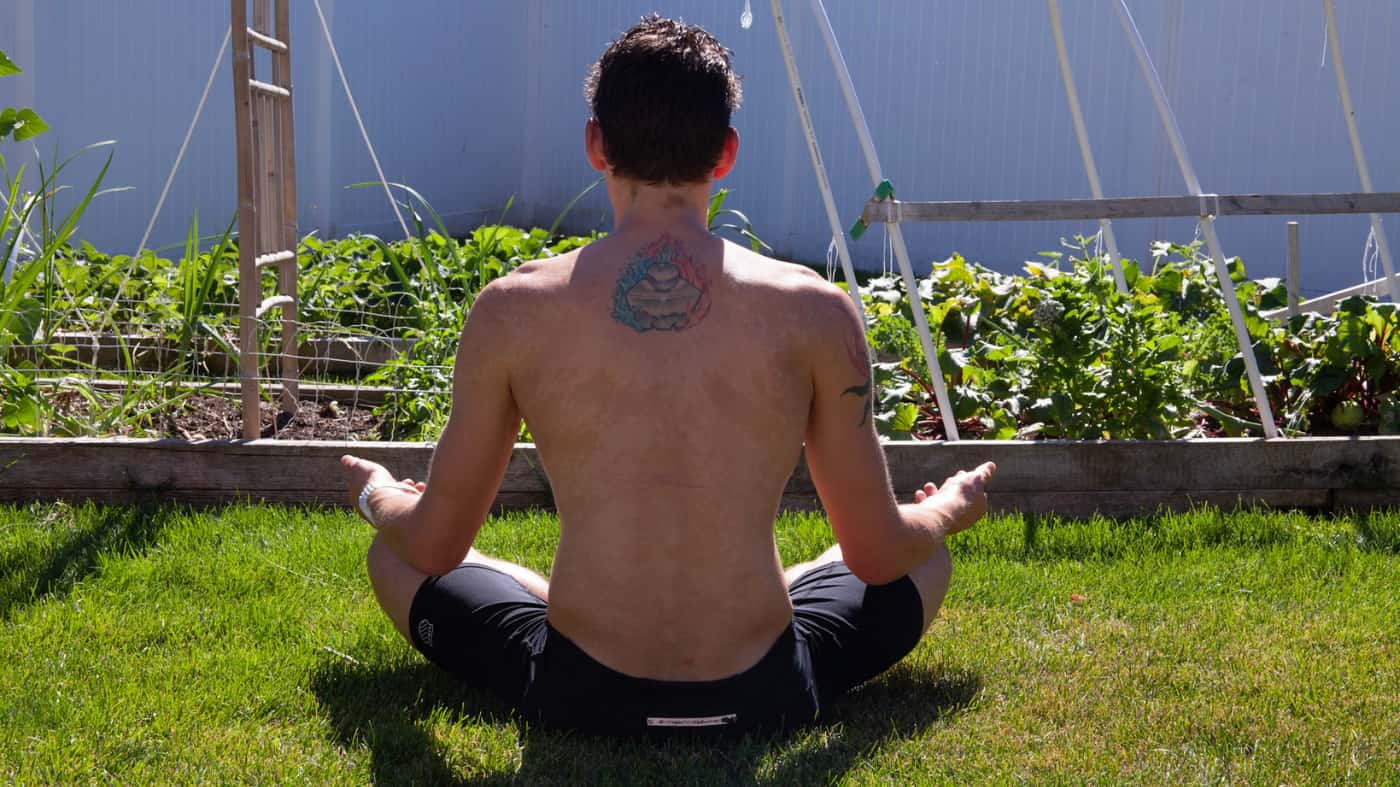
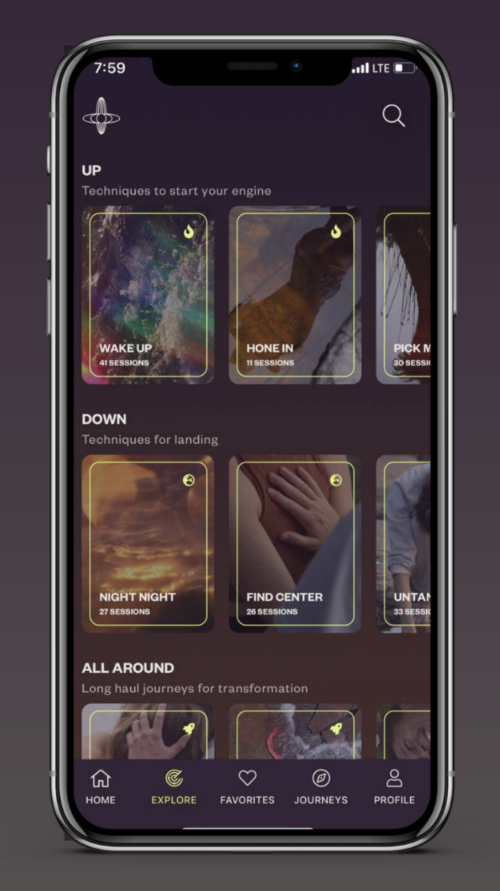


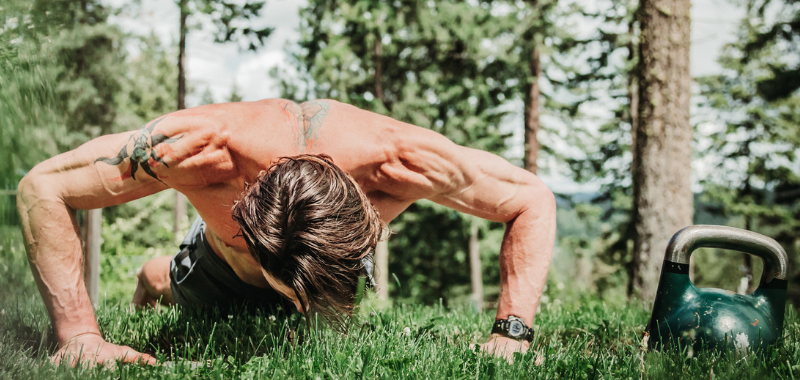


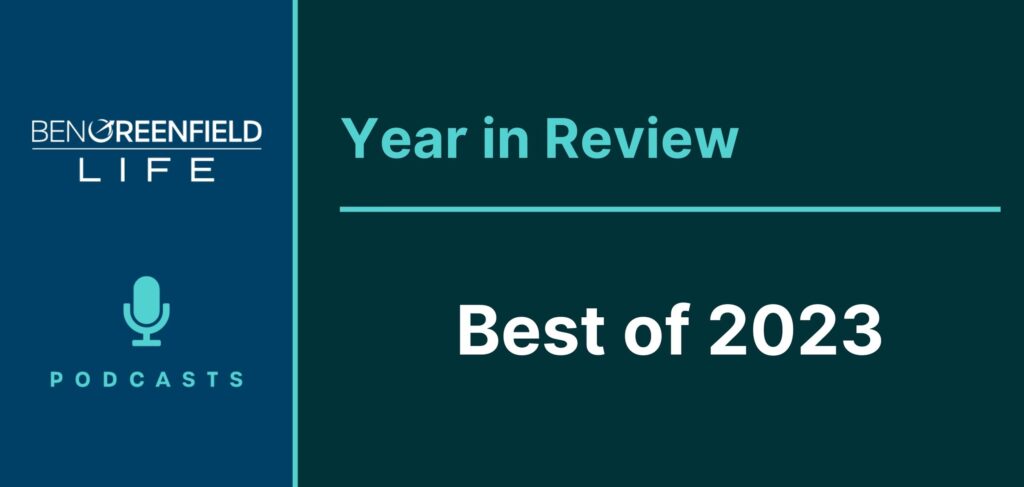






Thanks for the shoutout Ben — What an amazing article! I learned a few tips myself. I’m the co-founder and CEO at Othership — For anybody interested in Othership membership, passes to our physical spaces or creating a custom breathwork program, DM me at @robbiebent1 on twitter and Ill get you setup!
I have had sleep apnea for many years and recently (in January) read James Neal’s book as well as The Breathing Cure by Patrick Mckeown. I since have learned to breathe exclusively from my nose. I make a point of only breathing through my nose for workouts. I incorporate breath work daily by going out for a 15-20 minute walk at lunchtime where I breathe as slowly as possible. I’ve done mouth taping as well with great success. Finally I do 5 minutes of very slow breathing before bed. I can’t say enough about the benefits of these practices over a period of less than 6 months. The great news for me is that I no longer need a CPAP machine which I had been using for over 15 years.
Dan that’s amazing! So would you say that the breathing alone got you off the Cpap or did you loose some weight as well with other life changes?
Cheers
Jacus
I have been using breath work for years to help me reduce stress, improve focus and keep myself in a parasympathetic state so that my body can recover. I also found that using CBD (Element Health CBD, specifically) really helps enhancement the effects of breath work and allows for me to sleep much better!
Othership ruless! I’ve been using it since the first time you talked about it and I’m feeling a lot more connected with myself
glad to hear it’s working well for you Julio